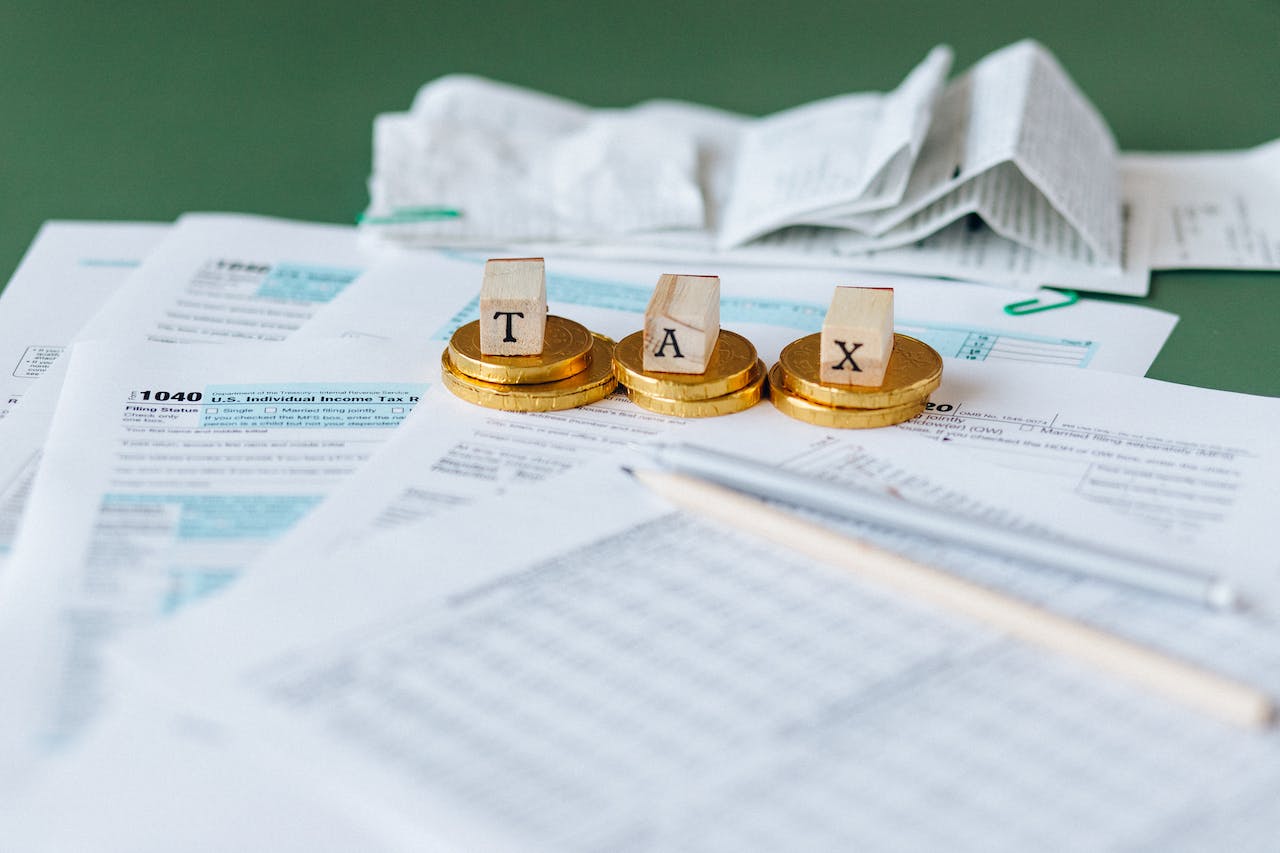Real estate investment strategies often navigate the intricate landscape of tax codes, and among the many provisions, Section 1031 stands as a pivotal tool for astute investors. A 1031 exchange, succinctly put, is a strategic swap of one investment property for another, providing a unique avenue for deferring capital gains taxes. This maneuver, deriving its name from Section 1031 of the Internal Revenue Code (IRC), has become a linchpin in the real estate domain.
At its core, a 1031 exchange allows investors to change the form of their investment without triggering immediate capital gains taxes, fostering uninterrupted growth by keeping investments tax-deferred. This financial legerdemain hinges on the requirement that the exchanged properties must be ‘like-kind,’ a deceptively simple term masking the breadth of possibilities—ranging from an apartment building to raw land or a ranch to a strip mall.
A nuanced understanding of its mechanisms is paramount for investors eyeing the 1031 exchange as a strategic financial maneuver. This guide will dissect the intricate rules and stipulations and provide practical advice on optimizing this powerful tool for sustained investment gains. Join us as we navigate the complex terrain of Section 1031, illuminating the path for investors seeking to harness its potential.
What Is Section 1031?
A 1031 exchange, colloquially known as a like-kind exchange or a Starker exchange, is a strategic maneuver allowing real estate investors to swap one investment property for another without triggering immediate capital gains taxes. This financial sleight-of-hand relies on the provisions outlined in Section 1031 of the Internal Revenue Code, offering investors a powerful tool for optimizing their portfolios.
The fundamental concept is a straightforward swap, where the investor can change the form of their investment while deferring taxes on any gains. This process is not confined by frequency, enabling a seamless rollover of gains from one real estate asset to another and another. The crucial caveat lies in the requirement that the properties involved must be ‘like-kind,’ a term expansively interpreted, allowing exchanges ranging from residential properties to commercial ventures.
Tax Implications and Benefits
The allure of a 1031 exchange lies in its ability to defer capital gains taxes, providing investors with a unique opportunity to continue the tax-deferred growth of their investments. Instead of facing taxes upon the sale of an asset, investors can perpetuate a cycle of exchanges, deferring taxes until a cash sale occurs many years later. The tax implications are particularly advantageous, with the potential of facing only one tax payment at a long-term capital gains rate, currently ranging between 15% and 20%.
Qualification Criteria for Like-Kind Properties
To qualify for a 1031 exchange, the properties involved must meet the like-kind criteria. Understanding these criteria is crucial for investors aiming to leverage the benefits fully. The like-kind exchange rules are surprisingly liberal, allowing for a diverse range of exchanges, such as:
- Apartment building for raw land
- Ranch for a strip mall
- Residential property for commercial property
This flexibility offers investors strategic opportunities for portfolio optimization while remaining compliant with IRS regulations. Ensuring that the properties meet these criteria is vital to preserving the tax-deferred nature of the transaction.
Properties Eligible for 1031 Exchange
In 1031 exchanges, the spotlight is on investment and business properties, where savvy investors find a playground for strategic maneuvers. Under Section 1031, the IRS caters specifically to those engaged in the wealth-building game through real estate. Whether swapping an apartment building for a retail space or transitioning from commercial to residential holdings, the flexibility of like-kind exchange rules opens avenues for diversification and optimized returns.
Navigating this terrain requires a discerning eye, and investors must recognize that personal residences typically fall outside the purview of 1031 eligibility. Instead, the focus is on assets held for investment or used in a trade or business. The intricate dance of wealth accumulation through property investment finds its choreography within the confines of these rules, guiding investors toward judicious choices.
Former Principal Residence Conditions
While Section 1031 predominantly caters to investment and business properties, there are nuanced conditions under which former principal residences can qualify. Investors must tread carefully, as transitioning a personal abode into an investment property requires adherence to specific timelines and usage patterns. This isn’t merely a matter of changing the nameplate; it necessitates a shift in the property’s primary function and purpose.
With its watchful eye, the IRS stipulates that the property must be held for investment purposes post-exchange. This nuanced dance with the tax code underscores the need for meticulous planning, ensuring that the former residence transforms into a bona fide investment vehicle.
Limitations on Vacation Properties
The allure of turning a vacation retreat into an investment hasn’t been lost on astute investors. However, the IRS imposes limitations on this front. While it was once feasible to seamlessly transition from one vacation home to another using a 1031 exchange, Congress tightened this loophole in 2004. To qualify, investors must transition the property into a rental business, demonstrating a commitment to a businesslike approach.
The IRS explicitly notes that merely offering the vacation property for rent without securing tenants could disqualify it from a 1031 exchange. This strategic limitation adds a layer of complexity, emphasizing the need for investors to approach the exchange with meticulous planning and a keen understanding of the regulatory landscape.

Special Rules for Depreciable Property
In the intricate realm of 1031 exchanges, real estate investors must navigate the terrain of special rules for depreciable property, where the specter of depreciation recapture looms. Depreciation, a time-honored tax benefit allowing investors to deduct the wear and tear costs, plays a pivotal role in shaping investment strategies. However, when engaging in a like-kind exchange, the IRS triggers depreciation recapture, treating it as ordinary income.
The essence of depreciation recapture lies in the IRS reclaiming some of the deductions enjoyed during the property’s ownership. For investors, this means facing taxation at ordinary income rates on the accumulated depreciation, potentially eroding the tax-deferred benefits of a 1031 exchange.
Scenarios for Avoiding Recapture
While depreciation recapture is inevitable in certain scenarios, savvy investors can strategically navigate to minimize its impact. One effective approach involves exchanging one building for another, a transaction that allows investors to sidestep the recapture provision. This hinges on swapping properties with similar structures, preserving the tax benefits accrued through depreciation.
However, the intricacies multiply when the exchange involves improved land with a building and unimproved land without a building. In such cases, the depreciation claimed on the building during ownership becomes subject to recapture as ordinary income. To steer clear of this, investors need astute planning and a keen understanding of the nuances within the tax code.
Importance of Professional Guidance
Professional guidance emerges as a beacon for investors in the labyrinth of depreciation recapture and like-kind exchanges. Navigating these complexities demands an in-depth understanding of tax codes and a strategic mindset to optimize the benefits of 1031 exchanges. The pitfalls and potential tax liabilities underscore the importance of enlisting the services of tax professionals and financial advisors.
At the NNN Deal Finder, we empower investors with a nuanced understanding of the rules, structuring transactions to maximize benefits while minimizing exposure to depreciation recapture. As the tax landscape evolves, our insights become invaluable, ensuring investors can confidently harness the power of 1031 exchanges without falling prey to unforeseen tax consequences.
Changes to 1031 Rules: Tax Cuts and Jobs Act (TCJA)
In the ever-evolving landscape of tax regulations, the Tax Cuts and Jobs Act (TCJA) in December 2017 ushered in significant changes, casting its impact on 1031 exchanges. Before the TCJA, personal property exchanges, encompassing assets like franchise licenses, aircraft, and equipment, found eligibility for a 1031 exchange. However, the TCJA altered this landscape by restricting the qualification to real property defined under Section 1031. This shift requires investors to adapt their strategies, focusing exclusively on real estate assets for like-kind exchanges.
The TCJA’s full expensing allowance for specific tangible personal property attempts to offset this change, offering an avenue for deductions. However, excluding certain personal property from 1031 exchanges underscores the necessity for investors to stay abreast of evolving tax laws, ensuring their strategies align with the current regulatory framework.
Transition Rules for Personal Property
Navigating the nuances of TCJA, investors should be cognizant of transition rules that grant a lifeline for personal property exchanges. In 2018, a transition rule permitted 1031 exchanges of qualified personal property if the original property was sold or the replacement property was acquired by December 31, 2017. This specific transition, however, was tailored to the individual taxpayer and did not extend to reverse 1031 exchanges where the new property was acquired before the sale of the old one.
While personal property exchanges faced a narrowing scope, interests as tenants in common (TIC) in real estate retained their eligibility for 1031 exchanges. These subtleties highlight the need for investors to meticulously assess the specifics of their transactions, ensuring compliance with transition rules and optimizing benefits within the constraints of the evolving tax landscape.
Exclusions and Qualifications
In the post-TCJA era, it becomes imperative for investors to discern the exclusions and qualifications that define the contours of 1031 exchanges. For instance, corporate stock or partnership interests never qualify and remain excluded under the current regulations. However, the enduring eligibility of interests as a tenant in common in real estate offers investors a strategic avenue within the revised framework.
Understanding these exclusions and qualifications is integral for investors seeking to leverage 1031 exchanges effectively. As the regulatory landscape evolves, staying informed and seeking professional advice become paramount to ensuring the seamless execution of like-kind exchanges that align with the prevailing tax laws.

1031 Exchange Timelines and Rules
In 1031 exchanges, investors navigate through classic, delayed, and reverse exchanges, each presenting a distinct approach to swapping properties.
- Classic Exchange: This involves a straightforward swap between two parties. However, the rarity of finding a direct match often leads to more prevalent alternatives.
- Delayed Exchange: Most exchanges employing a qualified intermediary as a middleman fall under this category. After selling the property, the intermediary holds the cash and acquires the replacement property on behalf of the investor. This three-party exchange is treated as a swap.
- Reverse Exchange: Investors opting for a reverse exchange purchase the replacement property before selling the old one. This demands a meticulous adherence to the 45- and 180-day time windows, a challenging yet strategic variation.
45-Day Rule: Designation of Replacement Property
One of the key timing rules in a delayed exchange revolves around the 45-day rule. Following the sale of the property, investors have a crucial 45-day window to designate the replacement property in writing to the intermediary. The IRS allows the designation of up to three properties, providing flexibility in unpredictable real estate landscapes. The strategic decision-making within this timeframe significantly influences the success of the exchange.
180-Day Rule: Closing on the New Property
Concurrently, the 180-day rule dictates the timeline for closing on the new property. Starting from the sale of the original property, investors must complete the acquisition of the replacement property within 180 days. The two timelines run in tandem, necessitating careful synchronization of property designations and closings. This compressed timeframe accentuates the need for swift and well-coordinated transactions.
The Concept of Concurrent Timing
The concurrent timing of the 45- and 180-day rules adds a layer of complexity to 1031 exchanges. If, for instance, an investor designates a replacement property exactly 45 days after the sale, they are left with only 135 days to finalize the transaction. This compressed schedule demands strategic planning and a proactive property identification and acquisition approach.
Understanding the nuances of these timelines is paramount for investors aiming to capitalize on the tax-deferred benefits of 1031 exchanges. The meticulous orchestration of property transactions within these prescribed periods is not merely a regulatory requirement but a strategic imperative for successful like-kind exchanges.
1031 Exchange Tax Implications: Cash and Debt
In the intricacies of a 1031 exchange, the treatment of cash leftover from the transaction, often referred to as “boot,” is a crucial consideration with significant tax implications. If surplus cash remains after the intermediary acquires the replacement property, it is treated as partial sales proceeds from the sale of the original property. Subject to taxation, this surplus represents a potential shift in the financial landscape for investors.
Consideration of Mortgage Loans and Debt
Beyond the allure of tax-deferred gains, investors must navigate the terrain of mortgage loans and debt when engaging in a 1031 exchange. The consideration extends beyond the sheer exchange of properties. It demands a meticulous examination of the mortgage on the relinquished property and any debt associated with the replacement property. The potential tax consequences are not solely linked to cash transactions but also encompass changes in liability.
Suppose an investor had a mortgage of $1 million on the relinquished property, yet the mortgage on the replacement property acquired in the exchange amounts to only $900,000. This apparent reduction in liability, while not resulting in immediate cash, could trigger tax implications. The decrease in debt is treated akin to cash, potentially leading to taxable gains for the investor. This intricate interplay between cash and debt underscores the need for astute financial planning.
Potential Taxation of Reduced Liability
The nuances of a 1031 exchange extend beyond the tangible movement of funds. Investors must be attuned to the potential taxation of reduced liability, recognizing that alterations in debt structure can have tax consequences akin to cash transactions. The meticulous examination of mortgage loans and debt becomes a strategic imperative, ensuring investors reap the benefits of tax deferral and navigate the complexities of reduced liability without inadvertently triggering unexpected tax liabilities.
For investors eyeing 1031 Exchange Properties, NNN Deal Finder is an indispensable resource. Our 1031 Exchange specialists possess the expertise to tailor solutions to your unique needs. We understand the complexities of 1031 exchanges and are here to guide you through every step, ensuring you make informed decisions that align with your financial goals. Your financial success begins with a conversation—schedule your consultation with NNN Deal Finder today!

1031 Exchanges for Vacation Homes
In the realm of 1031 exchanges, investors have historically explored using this strategy for vacation homes. The allure was clear—an opportunity to swap one vacation property for another, deferring any recognition of gain. This approach allowed investors to strategically navigate the real estate market strategically, often envisioning a seamless transition from one vacation retreat to another while postponing capital gains tax obligations.
Narrowing of the Loophole in 2004
However, the landscape of 1031 exchanges underwent significant changes in 2004 when Congress implemented measures to tighten the loophole associated with swapping vacation homes. The once-expansive possibilities were curtailed, introducing constraints that altered the dynamics of utilizing 1031 exchanges for vacation properties. While still able to leverage 1031 exchanges, investors now faced a narrower scope, necessitating a more nuanced approach to comply with the revised regulatory framework.
Revised Regulatory Framework for 1031s on Vacation Homes
In 2004, Congress introduced pivotal changes to the 1031 exchange landscape, specifically targeting the utilization of this strategy for vacation homes. The revisions aimed to tighten the previously exploited loophole, ushering in a more stringent regulatory framework. Here’s an in-depth look at the key elements of the revised regulations:
Stringent Qualification Criteria
The amended regulations introduced a stricter criterion, shifting the focus towards ensuring a genuine business or investment intent instead of casual or personal use.
Emphasis on Businesslike Conduct
The revised framework emphasized the necessity of a businesslike approach in transforming a vacation property into an eligible 1031 exchange asset. This involved more than a mere change in designation; investors were now required to exhibit a clear business purpose, such as generating rental income.
Actual Tenancy Requirement
Unlike the previous, more lenient regulations, the revised framework necessitated actual tenancy in the vacation property. Mere offers for rent without securing tenants would disqualify the property from meeting the criteria for a 1031 exchange.
Stricter IRS Scrutiny
The changes prompted the Internal Revenue Service (IRS) to adopt a more vigilant stance in scrutinizing 1031 exchanges involving vacation homes. Investors were now subject to heightened scrutiny regarding their adherence to the revised regulations, requiring a more meticulous approach to compliance.
Limited Timeframe Considerations
The revised regulations also imposed specific time constraints for investors aiming to convert vacation homes into rental properties for 1031 exchanges. Adherence to the designated timelines became crucial, adding a layer of complexity to the strategic planning involved in these transactions.
Per IRS guidelines, offering the vacation property for rent without securing tenants would disqualify it for a 1031 exchange. However, a well-thought-out plan, including actual tenancy and businesslike conduct, opens the door for investors to convert their vacation havens into income-generating assets. This nuanced approach aligns with the evolving regulatory environment and showcases the adaptability of investors seeking to leverage 1031 exchanges for vacation properties.
Moving Into a 1031 Swap Residence
In 2008, the IRS introduced a Safe Harbor Rule to clarify the circumstances under which an investor could use the replacement property acquired through a 1031 exchange as a residence without jeopardizing the exchange’s tax benefits.
Limitations on Immediate Conversion to Principal Residence
To meet the Safe Harbor Rule, investors must adhere to specific guidelines during the initial period after the exchange. During each of the two 12-month periods immediately following the exchange:
- The dwelling unit must be rented to another person for a fair rental for 14 days or more.
- Personal use of the dwelling unit cannot exceed the greater of 14 days or 10% of the number of days during the 12 months that the dwelling unit is rented at a fair rental.
This Safe Harbor provision allows investors to use the property in a manner that aligns with future residential plans while safeguarding the tax benefits of the 1031 exchange.
Impact of 2004 Law Changes on Investor Strategies
The rules surrounding converting a 1031 swap residence into a personal residence underwent significant changes in 2004. Before this amendment, investors might have engaged in a 1031 exchange, moved into the property for a few years, and then sold it, capitalizing on the exclusion of gain from the sale of a principal residence.
Post-2004, attempting to sell the replacement property as a principal residence within the first five years after acquisition under a 1031 exchange triggers a disqualification from the principal residence capital gains tax break. This alteration necessitated a shift in investor strategies, requiring a more extended waiting period for those intending to convert 1031 exchange properties into their principal residence.
Using 1031 Exchanges for Estate Planning
Estate planning often involves intricate strategies to minimize tax liabilities, and a 1031 exchange can play a crucial role in deferring taxes through the strategic timing of events. One notable benefit is the deferral of tax liabilities through death. When an investor passes away without selling the property obtained through a 1031 exchange, the tax deferral also ends. However, the heirs inherit the property at its stepped-up market value, providing a significant advantage.
Inheritance of Property at Stepped-Up Market Value
Upon the investor’s death, the beneficiaries receive the inherited property with a stepped-up market value, eliminating the need to pay the deferred taxes associated with the 1031 exchange. This stepped-up basis reflects the property’s value at the time of the investor’s death, potentially resulting in substantial tax savings for the heirs.
Estate Planning Benefits of 1031 Exchanges
Integrating 1031 exchanges into the strategy can yield significant benefits for those engaged in comprehensive estate planning. While the tax deferral associated with a 1031 exchange eventually concludes, the timing of this deferral provides a strategic advantage. By deferring taxes during the investor’s lifetime and allowing for a stepped-up basis at the time of inheritance, the 1031 exchange becomes a powerful tool in minimizing the overall tax burden on the estate.
How to Report 1031 Exchanges to the IRS
Reporting a 1031 exchange to the Internal Revenue Service (IRS) is a critical obligation for investors engaged in these transactions. Failing to provide the necessary documentation and details can lead to severe consequences, including potential tax liabilities and penalties. Proper reporting ensures transparency and compliance with tax regulations.
Form 8824: Key Information Required
The primary instrument for reporting a 1031 exchange is Form 8824. This form demands comprehensive information to facilitate accurate assessment by the IRS. Key details required include descriptions of the properties exchanged, dates of identification and transfer, any relationships with other parties involved, and the value of the like-kind properties. Additionally, investors must disclose the adjusted basis of the relinquished property and any liabilities assumed or abandoned during the exchange.
Submitting Form 8824 correctly is paramount, as inaccuracies or omissions may trigger IRS scrutiny and potentially result in tax assessments and penalties. Investors should diligently compile the required information, ensuring that each form section is completed accurately and without error.
Consequences of Incorrect Reporting
The consequences of incorrect reporting can be significant. Inaccurate or incomplete information may lead the IRS to question the legitimacy of the 1031 exchange, potentially resulting in the disqualification of tax benefits associated with the transaction. Investors may face additional tax liabilities and penalties, emphasizing the importance of precision in reporting.

Final Thoughts
Successfully executing a 1031 exchange for investment properties is a complex venture. The intricacies of tax regulations, stringent timing requirements, and nuanced property qualifications underscore the need for a strategic approach. Investors aiming to maximize gains and minimize tax implications must navigate this intricate terrain precisely.
In this challenging landscape, the significance of a reliable investment partner cannot be overstated. NNN Deal Finder emerges as a strategic ally, bringing unparalleled expertise with a vast array of lease investment opportunities that promise stability and sustainable returns. Our commitment to providing exclusive opportunities and meticulous analysis of potential properties positions them as invaluable assets for investors seeking success in the 1031 exchange arena.
To navigate the complexities of 1031 exchanges confidently and precisely, seize the opportunity to consult with NNN Deal Finder. Partnering with them ensures a streamlined investment journey, minimizing risks and maximizing rewards. Don’t navigate the intricate world of 1031 exchanges alone—book a consultation with NNN Deal Finder and empower your investment strategy.
Frequently Asked Questions (FAQs)
How does a 1031 exchange differ from a standard real estate sale?
Capital gains taxes are triggered in a standard real estate sale, requiring immediate payment. In contrast, a 1031 exchange allows investors to defer these taxes by reinvesting proceeds into a like-kind property, fostering continued tax-deferred growth.
What types of real estate qualify for a 1031 exchange?
The 1031 exchange applies to a broad spectrum of investment and business properties. The rules are surprisingly liberal, allowing exchanges between various property types, including apartments, raw land, ranches, and even certain business entities.
What are the time limits involved in completing a 1031 exchange?
In a delayed exchange, investors must adhere to a 45-day rule for designating replacement properties and a 180-day rule for closing the transaction. These timeframes run concurrently, demanding careful planning and execution.
Can you do a 1031 exchange with a property that has a mortgage?
Yes, a 1031 exchange is possible with mortgaged properties. However, it’s crucial to consider mortgage loans and debt on both the relinquished and replacement properties, as changes can impact taxation.
How can an investor identify potential replacement properties for a 1031 exchange?
Investors can utilize the services of specialized firms like NNN Deal Finder, which analyzes a vast array of NNN properties daily, presenting exclusive opportunities to investors. This targeted approach ensures a strategic selection of potential replacement properties.

